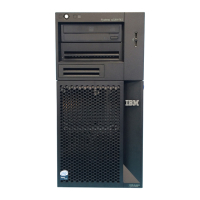280 IBM z13s Technical Guide
7.3.64 OSA-Express5S and OSA-Express4S checksum offload
OSA-Express5S and OSA-Express4S features, when configured as CHPID type OSD,
provide checksum offload for several types of traffic, as indicated in Table 7-51.
Table 7-51 Minimum support requirements for OSA-Express5S and OSA-Express4S checksum offload
7.3.65 Checksum offload for IPv4and IPv6 packets when in QDIO mode
The checksum offload function supports z/OS and Linux on z Systems environments. It is
offered on the OSA-Express5S GbE, OSA-Express5S 1000BASE-T Ethernet,
OSA-Express4S GbE, and OSA-Express4S 1000BASE-T Ethernet features. Checksum
offload provides the capability of calculating the Transmission Control Protocol (TCP), User
Datagram Protocol (UDP), and IP header checksum. Checksum verifies the accuracy of files.
By moving the checksum calculations to a Gigabit or 1000BASE-T Ethernet feature, host
processor cycles are reduced and performance is improved.
When checksum is offloaded, the OSA-Express feature runs the checksum calculations for
Internet Protocol version 4 (IPv4) and Internet Protocol version 6 (IPv6) packets. The
checksum offload function applies to packets that go to or come from the LAN. When multiple
IP stacks share an OSA-Express, and an IP stack sends a packet to a next hop address that
is owned by another IP stack that is sharing the OSA-Express, OSA-Express sends the
IP packet directly to the other IP stack. The packet does not have to be placed out on the
LAN, which is termed LPAR-to-LPAR traffic. Checksum offload is enhanced to support the
LPAR-to-LPAR traffic, which was not originally available.
Checksum offload is supported by the GbE features, which include FC 0404, FC 0405,
FC 0413, and FC 0414. It also is supported by the 1000BASE-T Ethernet features, including
FC 0408 and FC 0417, when it is operating at 1000 Mbps (1 Gbps). Checksum offload is
applicable to the QDIO mode only (channel type OSD).
z/OS support for checksum offload is available in all in-service z/OS releases, and in all
supported Linux on z Systems distributions.
7.3.66 Adapter interruptions for QDIO
Linux on z Systems and z/VM work together to provide performance improvements by using
extensions to the QDIO architecture. Adapter interruptions, first added to z/Architecture with
HiperSockets, provide an efficient, high-performance technique for I/O interruptions to reduce
path lengths and processor usage. These reductions are in both the host operating system
and the adapter (OSA-Express5S and OSA-Expres4S when using CHPID type OSD).
Traffic Support requirements
LPAR to LPAR z/OS V1R12
a
z/VM V6R2 for guest use
b
a. PTFs are required.
b. Device is directly attached to guest, and PTFs are required.
IPv6 z/OS V1R13
z/VM V6R2 for guest use
b
LPAR-to-LPAR traffic for IPv4 and IPv6 z/OS V1R13
z/VM V6R2 for guest use
b

